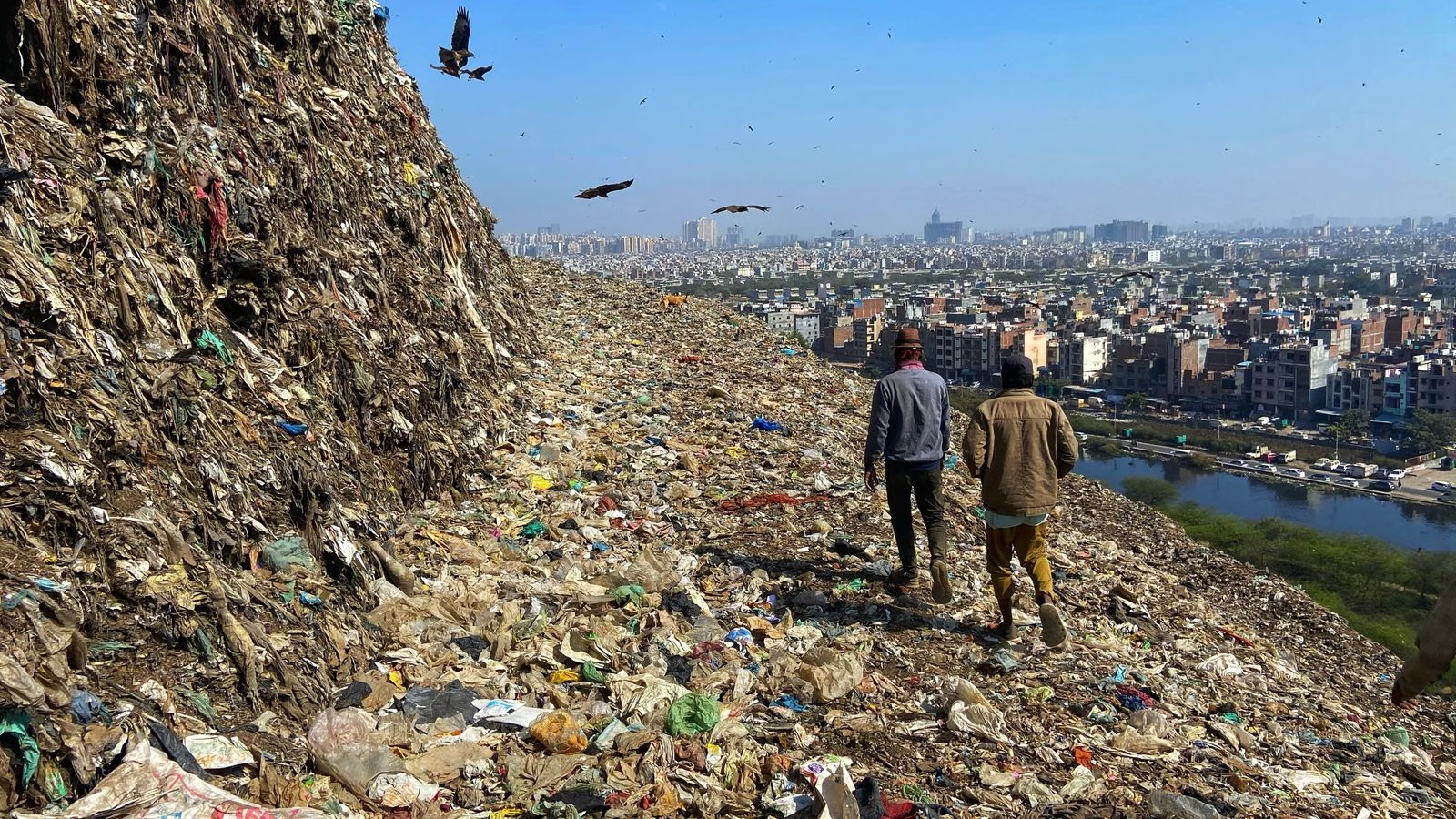<
div data-component-name=”ui-article-body” data-highlight-intro=”true”>
"It's a slow poisoning of people living here. The poison enters their bodies through the air weakening their immunity and medicines are not as effective as they should be," Dr Arshad Khan says.
He has been practicing for 14 years at the Mulla Colony, which is adjacent to the Ghazipur landfill.
One of the largest landfills in the country, it is also called the “garbage mountain of Delhi“.
A monstrosity, an eyesore – but more than that a source of death, decay, disease and pollution for hundreds of thousands who live and work in its shadows.
This trash mount is more than 200 feet high and covers an area of almost 70 acres – over 50 football pitches.
Standing at the top of more than 14 million metric tonnes of waste, one gets the size and scale of this man-made disaster.
Its stench is nauseating, breathing is difficult and a toxic taste engulfs the mouth and throat.
Feasted upon by birds, flies, vermin and cattle, this 20-storey slope of waste often catches fire in toxic blazes that last for days, especially during the summer.
At times parts of the over-saturated site collapses, crushing people. In September 2017, more than 50 million tonnes of garbage came crashing down burying people and vehicles.
Satellite data has revealed that this site is a hotspot for methane emissions – a powerful greenhouse gas that is almost 84 times more potent in warming the atmosphere than carbon dioxide over a 20-year period.
Kayrros, an energy and environmental intelligence company, shared satellite data with Sky News that showed methane emissions between November 2021 and May 2024, with an average flow rate of 2.91 tonnes per hour.
The monsoon season prevents the company from capturing data during warmer months when emissions are expected to be higher.
Considering the observations may be on the lower side, methane released at this constant rate amounts to approximately 25 kilotonnes annually, equivalent to the 20-year warming impact of CO2 emissions from 500,000 cars running simultaneously the whole year round.
As waste decomposes, chemical reactions within it causes temperatures to rise. Methane self-ignites at high temperatures, which can easily be reached at landfill sites due to the summer heat combined with highly combustible waste like plastic.
Established in 1984, the site was designed to hold up to 20 metres of waste which peaked in 2002.
For decades, successive governments promised to reduce this
Source: https://news.sky.com/story/ghazipur-landfill-the-70-acre-garbage-mountain-of-delhi-where-nearby-residents-are-being-slowly-poisoned-13323429














